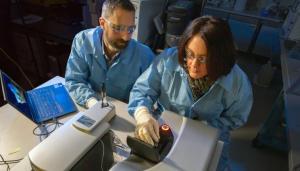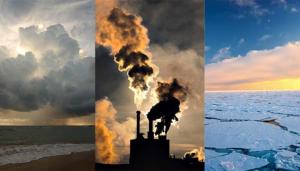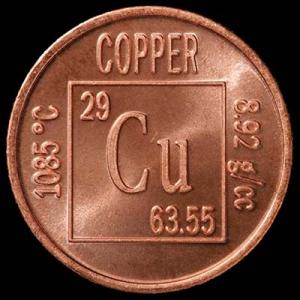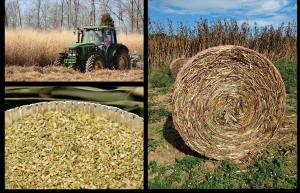LAB REPORT
Science and Technology Making Headlines
Feb. 12, 2021


LLNL researchers Nick Fischer and Amy Rasley are characterizing nanolipoprotein particle vaccine formulations using a dynamic light-scattering instrument. Detailed characterization of the nanoparticles provides an important quality control metric for vaccine development. Photo by Julie Russell/LLNL (taken pre-pandemic).
A universal vaccine
The goal of a universal COVID-19 vaccine is driving research at Lawrence Livermore National Laboratory. Researchers Nick Fischer and Amy Rasley are working with a nano-delivery system, known as a nanolipoprotein. Along with partners in England, they believe it could help make a sophisticated vaccine similar to Pfizer and Moderna more stable and easier to transport.
“And we've modified these molecules because they're very tunable,” Fischer explained.
Potentially, it could turn them into a platform that's versatile enough to deliver vaccines aimed at a broad spectrum of COVID-19. “And so, these kinds of vaccines, I think, are going to be absolutely critical going forward in providing us that kind of broad protection that we really need,” Rasley said.
Protection, not just from the immediate threat, but perhaps far into the future.


Global warming lags behind greenhouse gas emissions, meaning that past emissions continue to heat us into the future. New research finds that the warming ultimately achieved if greenhouse gas concentrations remained at current levels is larger than previously thought.
Paying for the past
Carbon emissions are still increasing. New research by Lawrence Livermore shows that if we hold emissions at their current level, the world will continue to warm past the goal set in the Paris Climate Agreement.
The researchers also show that if the world can reach net-zero (capturing and storing the same amount of carbon as emitted) by 2050, global temperatures would stabilize within a few decades.
The team used observations and climate model simulations to re-evaluate how much warming is “in the pipeline” from past emissions. Their estimate is higher than previous estimates because it accounts for changes in the geographic pattern of surface warming.
“Typically, committed warming is estimated assuming that changes in the future will pretty much follow changes in the past,” said LLNL atmospheric scientist Mark Zelinka, a co-author of the paper. “But we now know that this is a bad assumption.”

LLNL scientists have studied how materials like copper deform under extreme conditions.
Copper is one tough cookie
To better understand how materials deform under extreme conditions, researchers at LLNL have developed a new experimental method for probing large-strain and high-rate material strength.
In a paper recently published in Acta Materialia, Jonathan Lind, LLNL physicist and lead author, said results of the work aid in providing updated strength information that can be used in simulation codes.
“This study demonstrated that the method can observe differences in mechanical behavior due to the way a material was manufactured and processed prior to the experiment,” Lind said. “The work provides updated strength model parameters that more reliably capture the high strain-rate, large plastic strain behavior of copper.”
Researchers also observed that a material’s prior processing history influences its high strain-rate behavior. With demonstration of efficacy of the approach, Lind and his colleagues are now planning and conducting experiments on five other materials.


Fribrous feedstock can be burned to produce an energy-dense fuel and biochar, which can be buried or sequestered to achieve carbon-reduction gains.
Bioenergy heats up
Bioenergy has attracted substantial local investment in recent years as state lawmakers offer subsidies and favorable policies to promote big spending on infrastructure necessary to convert food waste, agriculture trimmings, dairy manure and even dead forest trees into cleaner-burning fuel whose environmental benefits can add up to be carbon negative.
State legislation in 2016 targeted reductions in methane and other short-lived pollutants by forcing local jurisdictions to cut the amount of organic material they send to landfills by three-quarters. The best way to do that depends on the feedstock.
Food and food-processing waste can be treated the same as dairy waste, by fermenting it and refining the gas it produces into an easily stored fuel.
Another approach is to super-heat dry, fibrous, feedstock. That produces an energy-dense fuel and biochar, which can then be buried or sequestered to achieve carbon-reduction gains. Lawrence Livermore National Laboratory has estimated this technology could become a central tool for meeting California's aggressive climate-change goals.


LLNL scientists found carbon retains the diamond structure up to the highest pressure.
Diamonds are forever
Even with the weight of worlds on its shoulders, diamond refuses to buckle under pressure. Thanks to the highest-pressure X-ray diffraction experiments ever reported, Lawrence Livermore researchers have revealed that the structure of diamond remains unchanged at 2 terapascals (TPa) — more than five times the pressure at Earth’s core.
Diamond’s atoms are normally arranged in a repeating pattern that is a variant of a common crystal structure known as face-centered cubic. But density functional theory calculations suggest that at about 1 TPa, a more complex structure, based on a different arrangement called body-centered cubic, would be more stable. At even higher pressures, the material should prefer a form known as a simple cubic structure. However, the strong carbon-carbon bonds in diamond create a huge energy barrier to transitioning to these other structures, and researchers want to know how much extra pressure would be needed to force diamond to make the switch.
“So instead of having an instantaneous rise in pressure, we tried to increase the pressure slowly,” says Amy Lazicki of Lawrence Livermore, who led the experimental work for the new study. “And by slowly, I mean over the course of 20–30 nanoseconds.”
To achieve this, Lazicki’s team used the world’s highest-energy laser system, at LLNL’s National Ignition Facility. They ramped up the intensity of 16 laser beams focused on samples of diamond, creating a tiny explosion that launched a compression wave into the crystals. At the same time, two dozen separate laser beams fired into a metal foil to generate a two-nanosecond-long burst of intense X-rays, which scattered through the compressed diamond to reveal its structure. Lazicki says that it took about five years of work to get this finely tuned system up and running, reaching almost twice the pressure achieved in any previous X-ray diffraction experiments.





